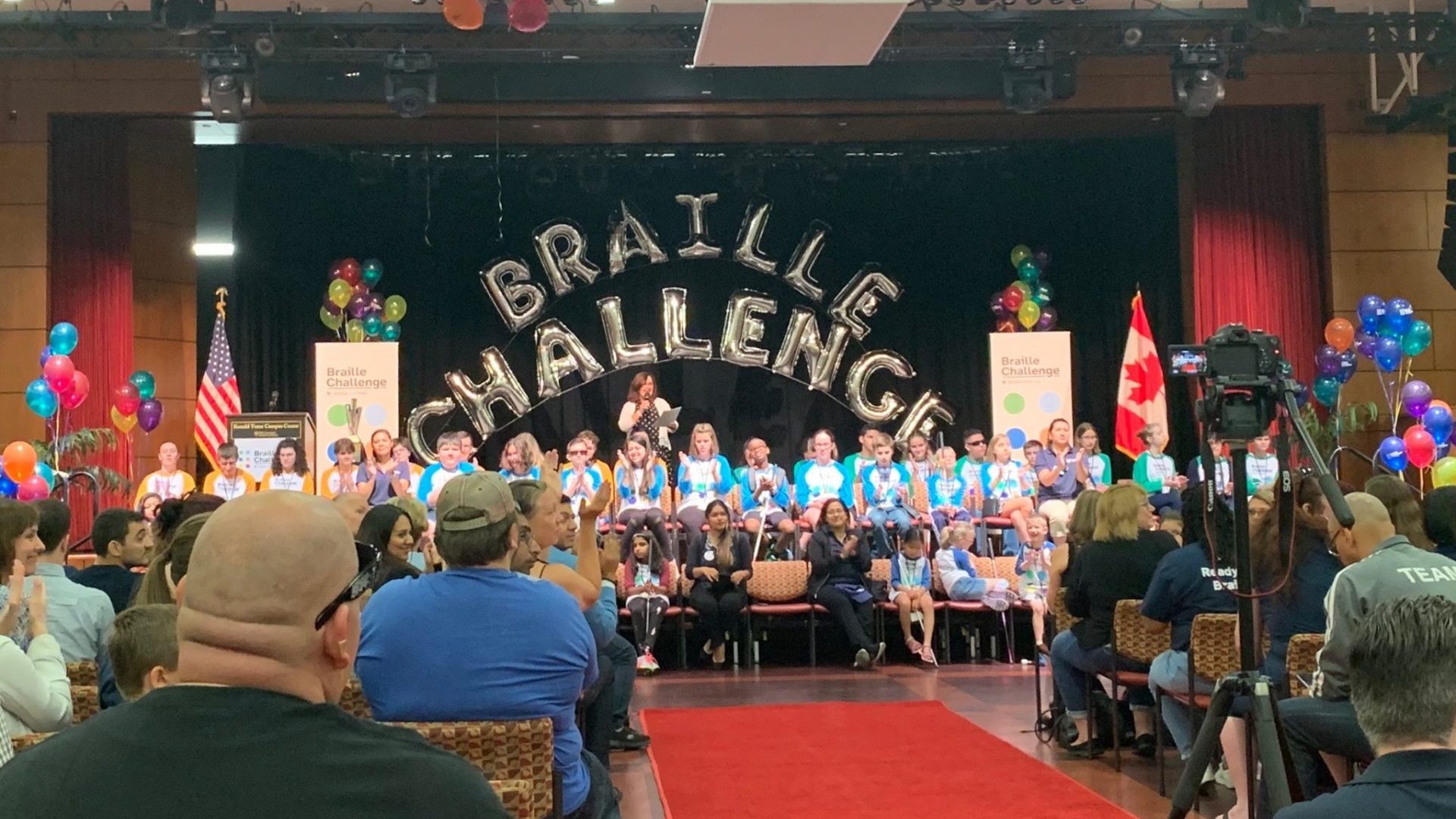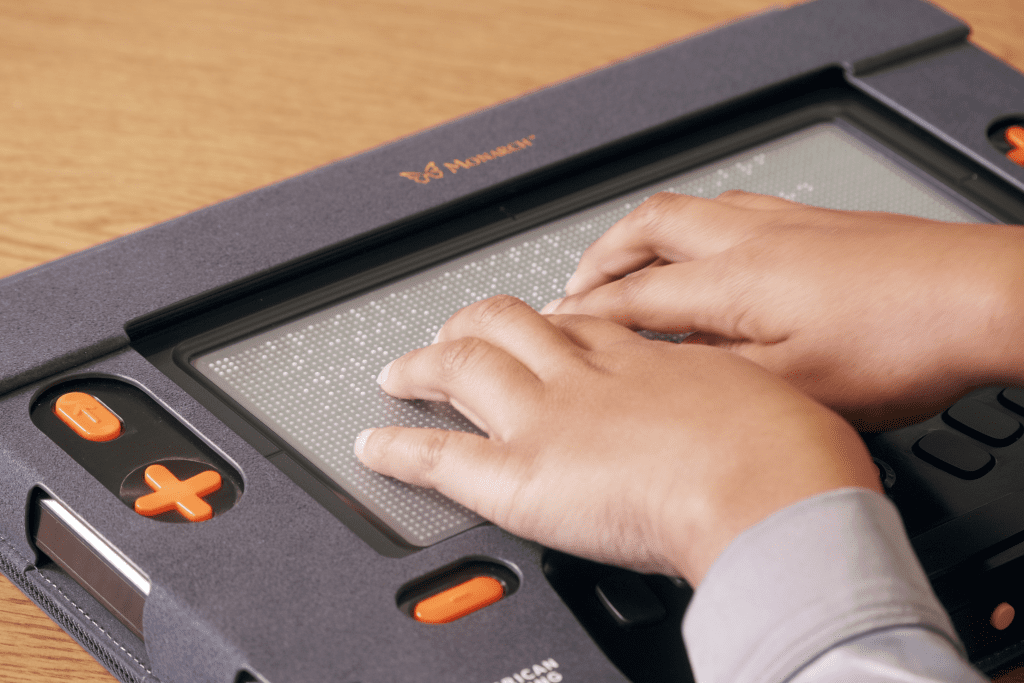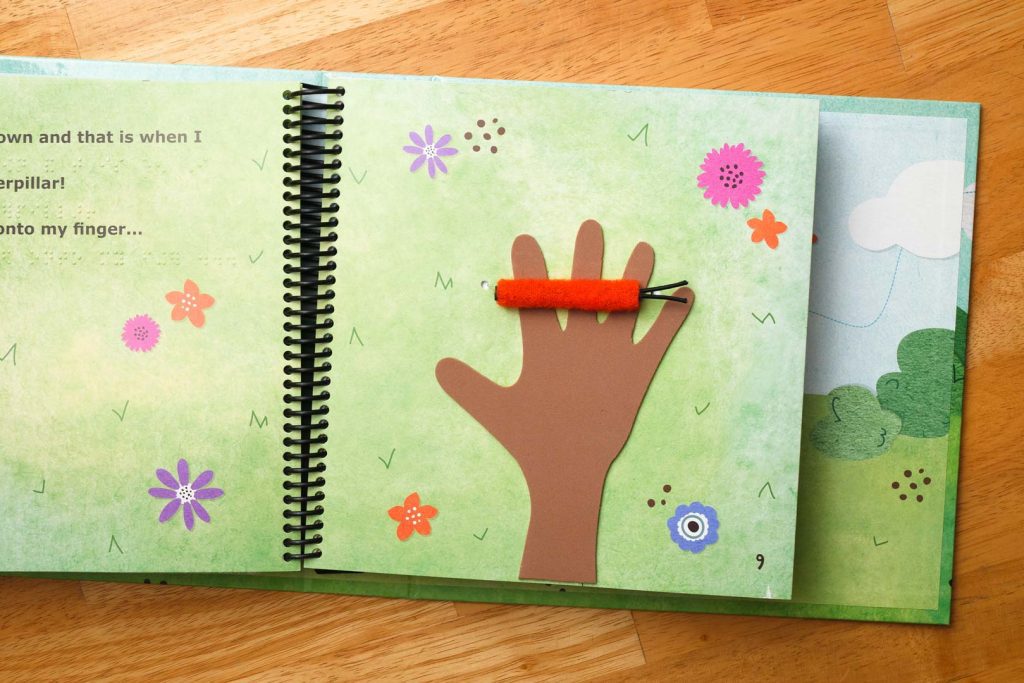Take the Challenge: How the Braille Challenge Promotes Literacy

In honor of Braille Literacy Month in January, we wanted to highlight a contest that encourages all students to show off their braille skills. The Braille Challenge is the only academic competition of its kind in North America for students who are blind or visually impaired. We spoke with Rachel Antoine, APH Scholar and Manager of National Programs and Services at the Braille Institute of America, about the challenge and her involvement in it. Learn more about Rachel by reading her APH Scholar blog.
What is the Braille Challenge?
Created in 2000 to encourage participants to practice their braille literacy skills, the Braille Challenge is an academic competition for students grades 1 – 12 who are blind or visually impaired and who can read and write braille. Each year, over 1,200 contestants across the US, Canada, and UK compete in the challenge. Challengers are broken down into five age groups: Apprentice (1-2 Grades), Freshman (3-4 Grades), Sophomore (5-6 Grades), Junior Varsity (7-9 Grades), and Varsity (10-12 Grades). During the preliminary and final rounds, students are tested on fundamental braille skills including reading comprehension, spelling, speed and accuracy, proofreading, and charts and graphs.
Evolution of the Braille Challenge
The first Braille Challenge event was hosted by Braille Institute’s regional center in Anaheim, CA in 2000. The local, daylong contest was open to students in first through twelfth grade who attended the Braille Institute’s Southern California youth programs. Rachel said, “Bolstered by our success, we repeated the local event in Orange County the following year and hosted 75 local contestants.” In 2001, The Carroll Center for the Blind in Massachusetts was the first agency to accept “The Challenge,” and hosted their own local Braille Challenge for braille readers throughout New England. Their winners joined the winners from the Braille Institute’s own 2001 regional competition and together they participated in Braille Institute’s first National Braille Challenge in San Diego. In 2002, The Peninsula Center in Northern California hosted a preliminary as well, sending their winners to the Braille Institute’s three-way final round in June in Los Angeles. “Twenty-two years later, it has grown to dozens of regional partners in the US, Canada, and UK, emphasizing the study of braille while rewarding their success with fun-filled, but challenging, regional events,” said Rachel.
The 2022 Braille Challenge
This year, the Braille Challenge Preliminaries begin on January 1st, 2022 and run through March 16th, 2022. Contestants can either compete in a regional event or ask their TVI to proctor their test. “We currently have over 60 regional partners across the US, Canada, and UK. Our partners will host a regional event using a variety of testing methods from in-person, hybrid, or fully virtual,” said Rachel. APH’s own Jane Thompson is the KY Regional Braille Challenge Coordinator. 2022 marks the 12th regional held at the Kentucky School for the Blind (KSB) with the award ceremony taking place at APH.
The top 50 regional contestants will travel to Los Angeles in June to compete in the final round. Students who participated in a Braille Challenge Preliminary Contest are eligible to be considered National Finalists. Completed contests are scored by a team of certified transcribers. After scores are made available, they are input into a Braille Challenge database for eventual calculation.
Final scores are determined by a ratio average score. An auto-generated report sorts all contestant scores and identifies the finalists by this metric. The top 15 finalists’ contests get scored again, to verify. National Program staff confirm that permission forms are accurate and finalized. The top 10 scores from each category are then selected and announced. E-mails are sent to parents, regional coordinators, and/or TVIs to arrange finals. Those who score in first and second place in the final round win exciting pieces of access technology, like refreshable braille displays, to support their education.
In her role, Rachel oversees the planning and implementation of the Braille Challenge. She said, “My team and I focus on developing strategies that allow safe participation in our programs while prioritizing the health and wellness of our youth contestants, families, staff, and community. We are balancing the impact of a global pandemic with the critical need for our youth to continue their learning. We also get input from our Braille Challenge Advisory Committee (a team of leaders in the BVI field) to determine program policies and structure.” For this reason, the Braille Challenge has been virtual for the last two years, and Rachel’s team is hard at work planning the 2022 finals. We are also proud to have presented at the finals, both in-person and virtually, and look forward to attending the National Braille Challenge again this year.
Why Participate?
The mission of the Braille Challenge is to promote braille literacy among students who are blind and visually impaired. “Braille literacy is reading and writing in braille, which are fundamental skills that contribute to a successful and independent life in today’s world,” said Rachel. “Braille literacy has been and always will be more than just a tool for blind individuals who use it. Braille represents competency, independence, and equality. Braille is not a code to be deciphered, but it is a method of reading and writing that is equal in value to print for sighted people.” By taking the challenge, contestants commit to practicing their braille literacy skills, which will help them excel in higher education and reach their career goals.
To future challengers, Rachel said, “Join and be recognized for your amazing braille skills! Comradery, fun, competition, and the opportunity to be part of an international community of thousands of braille readers and writers are just a few of the many benefits of taking the challenge.”
Share this article.
Related articles

The APH Hive Launches Summer Learning Cohort
Are you ready to dive into the fascinating world of literacy education for students with visual impairments? APH is thrilled...

The Monarch: Improving Braille Literacy for Students
Braille helps students who are blind or low vision with reading, writing, and comprehension so they can succeed in school...

Go on an Adventure with The Caterpillar
Are you curious about the outside world? Explore your very own backyard with the help of a fuzzy, orange caterpillar...
